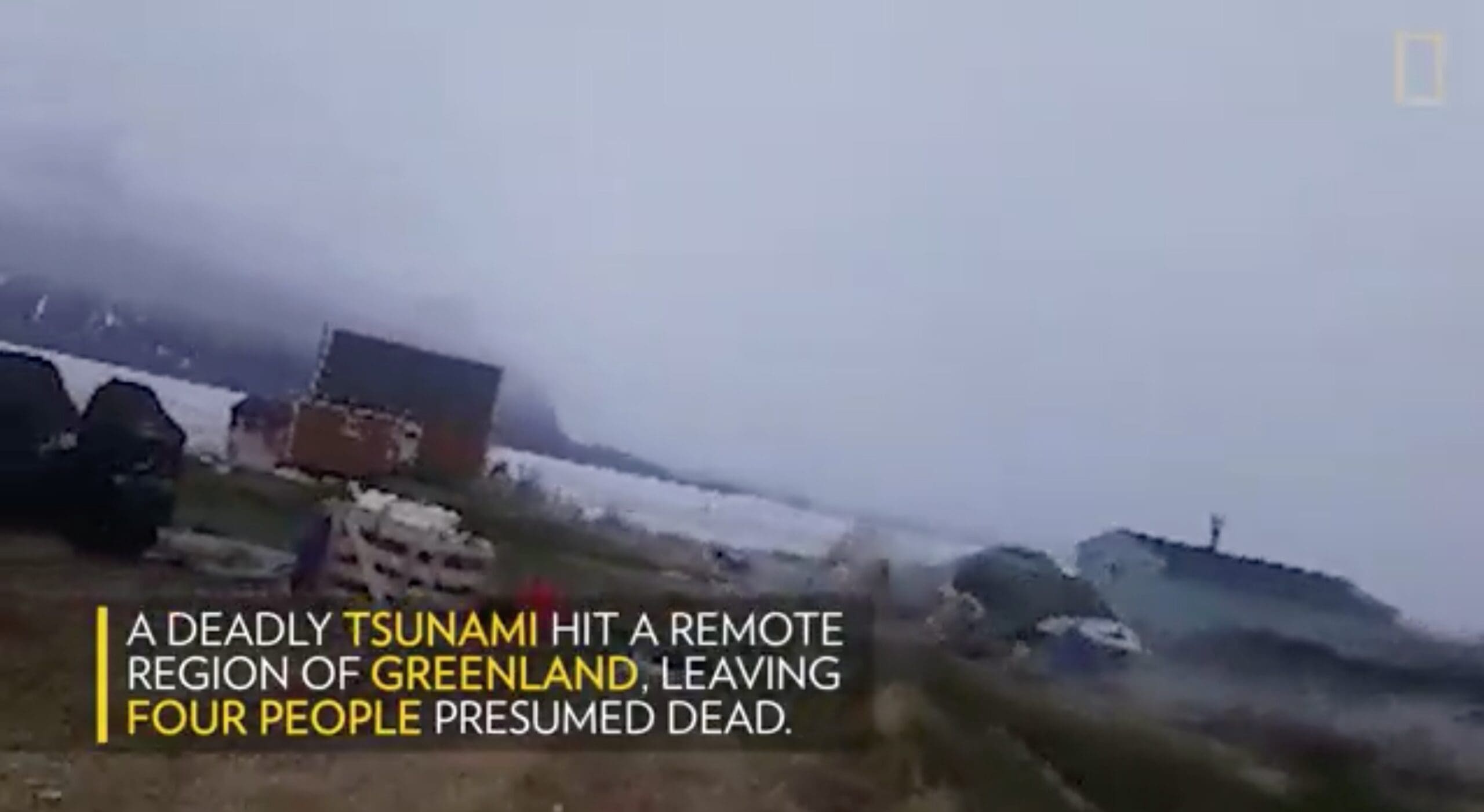[protected-iframe id=”8a16015dde24d50d4940cc377887c359-65244901-18734705″ info=”http://www.dailymail.co.uk/embed/video/1486531.html” width=”698″ height=”573″ frameborder=”0″ scrolling=”no” allowfullscreen=””]
National Geographic brings us this video of a ‘mega-tsunami” that hit Greenland on June 17th. The tsunami was one of the largest tsunamis ever recorded. The tsunami was created when a landslide caused massive chunks of glacier-held rock to fall nearly a kilometer down into the sea. The resulting wave wiped out the fishing village of Nuugaatsiaq, as reported by Nature.
Update, August 1: Findings published in a report about the June 17 tsunami revealed the wave reached 300 feet, making it one of the largest in recorded history. A reconnaissance trip to Greenland led by an environmental engineer at the Georgia Institute of Technology found that the “mega-tsunami” was caused by an unusually catastrophic landslide so large it generated a seismic signal, leading to confusion about the tsunami’s cause. In Greenland, these steep cliffs are a mix of rock and ice. As global temperatures warm, and the ice melts, massive landslides may increase.

